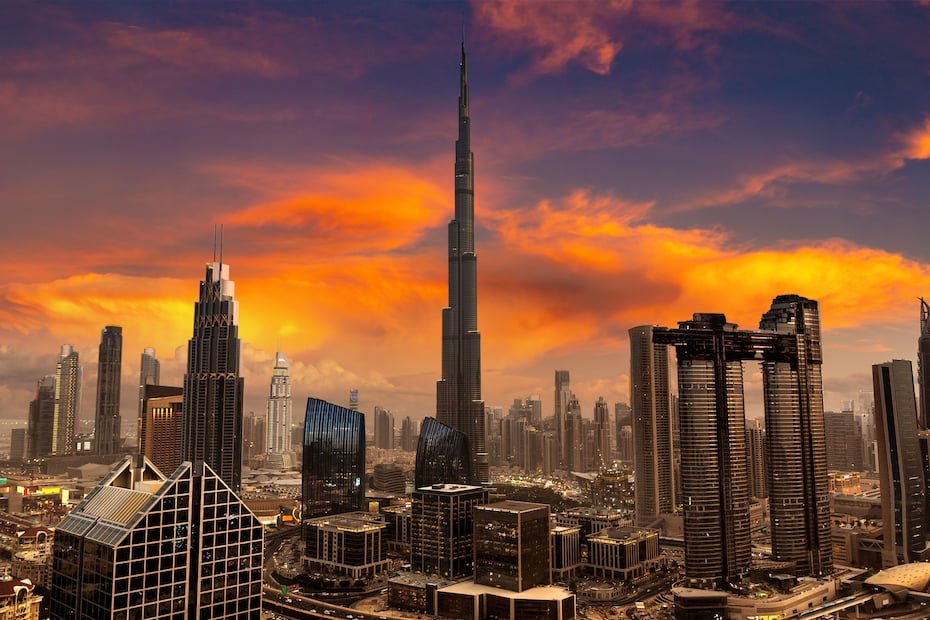
Image credit: Getty Images
As August sets in, the UAE enters the most oppressive phase of its summer, where soaring temperatures are now combined with rising humidity, turning daily life into a true endurance test. While June and July brought the dry, blazing heat typical of the desert climate, mid-August marks a shift—where the air becomes thick, damp, and stifling.
Read-Unusual weather system to bring clouds and rain to UAE
“It is during this period that temperatures combine with moisture in the air to create a sweltering atmosphere,” explained Ibrahim Al Jarwan, Chairman of the Emirates Astronomical Society. This sticky, muggy stretch is one of the most challenging times of year for UAE residents, especially along the coastal belt where humidity levels spike dramatically, compounding the discomfort of already soaring temperatures.
The silver lining? According to Al Jarwan, the appearance of the Suhail star, expected later this month, traditionally marks the end of the most extreme summer heat in the region. Its arrival has long been a sign of hope for relief, symbolising a gradual cooling trend, particularly noticeable during early morning hours.
48.7°C heat meets coastal humidity
On August 5, 2025, the UAE saw both ends of its extreme summer spectrum. The highest temperature recorded was 48.7°C in Mezaira, in the Al Dhafra region at 3pm on August 4.
#أقل_درجة_حرارة سجلت على الدولة صباح هذا اليوم 23.7 درجة مئوية في الفرفار (الفجيرة) الساعة 05:15 بالتوقيت المحلي لدولة الإمارات.#The_lowest_temperature recorded over the country today morning is 23.7°C in Al Farfar (Fujairah) at 05:15 UAE Local time. pic.twitter.com/m3pNbgBXYe
— المركز الوطني للأرصاد (@ncmuae) August 5, 2025
Meanwhile, the lowest temperature dipped to 23.7°C in Al Farfar (Fujairah) just before sunrise on August 5, the National Centre of Meteorology (NCM) noted.
As humidity builds up across coastal cities like Dubai, Abu Dhabi, and Sharjah, even modest outdoor activities become difficult. The combination of high dew points and unrelenting sun drives the “feels like” temperature into unbearable territory. In these conditions, residents increasingly rely on air-conditioned spaces for safety and comfort.
أعلى درجة حرارة سجلت على الدولة هذا اليوم 48.7 درجة مئوية في مزيرعة (منطقة الظفرة) الساعة 15:00 بالتوقيت المحلي لدولة الإمارات
The highest temperature recorded over the country today is 48.7 °C in Mezaira (Al Dhafra region) at 15:00 UAE Local time. pic.twitter.com/Xih3un7fU2— المركز الوطني للأرصاد (@ncmuae) August 4, 2025
However, sandstorms and dust haze still occasionally affect visibility, adding another layer of inconvenience to an already challenging climate.
Weather tech on watch as heat intensifies
Just one day before this heat peak, on August 4, Sheikh Mansour bin Zayed Al Nahyan, Vice President, Deputy Prime Minister, and Chairman of the Presidential Court, paid a significant visit to the NCM headquarters in Abu Dhabi.
The timing was symbolic—as the country braces for peak summer stress, its leadership is ensuring that the UAE’s weather infrastructure is ahead of the curve. Sheikh Mansour was briefed by Dr Abdulla Al Mandous, Director-General of the NCM and President of the World Meteorological Organisation (WMO), on the Centre’s forecasting technology, early warning systems, and climate data platforms, a WAM report said.
He also explored the Centre’s cloud seeding units, marine and renewable energy forecasting systems, and its supercomputer-based numerical models that allow for hyper-local predictions. These technologies play a vital role in climate readiness, particularly during critical periods like the one currently gripping the nation.
Another highlight of Sheikh Mansour’s tour was the “Early Warning for All” platform, created in partnership with the Ministry of Foreign Affairs. This digital tool ensures UAE citizens are instantly alerted to weather threats, whether at home or abroad, enhancing safety and disaster coordination on a global level.
The NCM also showcased its Science Dome, a public-facing educational initiative that seeks to build climate literacy among youth and adults alike. With interactive simulations and workshops, it aims to create a generation that understands the complex relationship between climate, environment, and technology.
“The leadership’s support is crucial in driving the NCM’s innovation,” said Dr Al Mandous. “Our work in forecasting and climate management is about more than data—it’s about protecting people and preparing for the future.”
Suhail star: Nation watches the sky
As the UAE waits for the Suhail star to rise, typically visible in late August—the population braces for a few more intense weeks of humidity and heat. This star has, for centuries, signaled a change in the air: slightly cooler mornings, less intense midday heat, and the gradual return of tolerable weather conditions.
Until then, the nation relies on data, preparation, and resilience to endure the height of summer. And as Sheikh Mansour’s visit made clear, the UAE is not only enduring the climate, it is planning for it with precision, science, and strategy.

